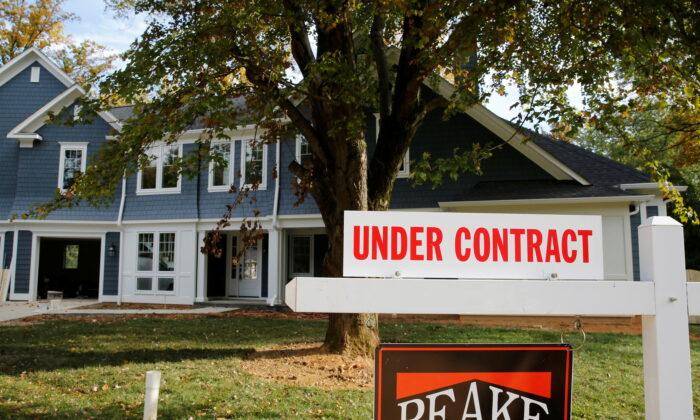Close to half a million low-income homeowners in the United States, many of them minorities, are nearing the end of mortgage forbearance plans that allowed them to halt loan payments during the pandemic.
The number of borrowers exiting the plans is expected to surge over coming weeks as people who signed up early on in the pandemic reach the 18-month limit for forbearance. While close to 80 percent of homeowners who entered programs at some point in the pandemic have since exited them, the remaining 20 percent tend to live in areas with higher shares of minorities, or have lower credit scores and lower incomes, research shows.
Their missed payments could add up to a “forbearance overhang” of more than $15 billion in postponed mortgage payments, or about $14,200 per person, according to Brookings Institution research.
Many borrowers will be able to push missed payments to the end of their loans, and others will be able to capitalize on a hot housing market to refinance or even sell their homes. Homeowners facing hardships who signed up for forbearance in later months may still be eligible for additional extensions.
Some 7.6 million borrowers have been in forbearance at some point during the pandemic, representing about 15 percent of all mortgage holders, and about 1.25 million borrowers were still in forbearance plans in mid-October, according to Black Knight, a mortgage technology and data provider.
It estimates that about 850,000 homeowners who participated in forbearance were in plans set to expire by the end of this year, including those who already exhausted their options. Roughly half of those homeowners have loans backed by the Federal Housing Administration or the Department of Veterans Affairs.
Those loans, which often require smaller down payments and lower credit scores, are disproportionately used by low-income borrowers, first-time home buyers, and minorities. FHA loans, for example, were used by 37 percent of minority home buyers in 2019, according to the Department of Housing and Urban Development.
How easily those homeowners are moved into other plans after their forbearance programs end will be monitored by regulators and others in the weeks ahead.
“We’re going to watch closely,” said Mark McArdle, assistant director of mortgage markets at the Consumer Financial Protection Bureau.
The CFPB ramped up scrutiny of mortgage servicers over the matter this spring and in June finalized new protections for homeowners struggling to make mortgage payments due to the pandemic. Still, foreclosures will be allowed to resume once those extra protections have been met.
The process can be mystifying.
Soon after forbearance ended for Marvin Williams in August, he learned his loan would be transferred to another servicer.
For longer than a month, Williams said it was not clear if the new company would defer his missed mortgage payments—adding up to at least $8,000—to the end of his loan or if he would have to pay it back sooner.
Process Streamlined
Borrowers exiting forbearance can generally choose between resuming payments and having the deferred debt tacked on to the end of their mortgage; having loans modified so monthly payments are reduced; or paying back the debt by selling the home or refinancing.The pace of forbearance exits increased in September and is expected to hit the highest pace in more than a year over the next few weeks, said Mike Fratantoni, a senior vice president and chief economist for the Mortgage Bankers Association.
Mortgage service firms hired more workers and are “well prepared” for the higher case load, Fratantoni said. “It is such a stark comparison to what happened a decade ago where coming out the great financial crisis everyone was just so frustrated with the pace of resolution.”
This time, servicers—who receive payments from borrowers and disburse them to investors, tax authorities, and insurers—have simplified the process for moving to alternatives so that homeowners need to provide little or no additional documentation.
About 35 percent of borrowers who exited forbearance in September resumed paying and deferred missed payments to the end of their loan, according to the MBA. About 28 percent modified their loans and 19 percent exited without a plan in place, including many still working toward a loan modification, said Fratantoni.
The boom in home prices, up over 30 percent since the pandemic began, may help. About 93 percent of borrowers in forbearance have at least 10 percent equity in their homes even after 18 months of missed payments, according to Black Knight.
After the Great Recession, by contrast, 28 percent of borrowers owed more on their mortgages than their homes were worth.





